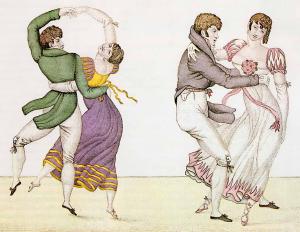I’m thrilled to have my good friend and fellow author, Sarah Monzon, on my blog today. Sarah and I met shortly after I joined American Christian Fiction writers. We have read and critiqued each other’s stories and encouraged one another on the bumpy road to publication.
Sarah’s newest release, All of You, is the second book is her acclaimed A Carrington Family Novel series. Pardon me while I brag on my friend, but the first book in the series, Finders Keepers, is currently a Selah Award finalist and received a 4 star review from Romantic Times.
Sarah is going to tell us about some of the history in her latest dual timeline novel, All of You.
But first, here’s the back cover blurb so you’ll know what her newest release is all about.
Jacquelyn Rogers can rebuild anything…except the shambles of her past. A restorer of vintage planes, she’s worked hard to earn the reputation of being one of the guys. The last thing she needs is a former Navy pilot fighting his own inner demons stepping in to defend her from dangers she thought she’d outrun long ago. Some battles must be fought alone.
After a freak accident severs Lieutenant Michael “Finch” Carrington’s dreams, as well as two limbs, he’s left with nothing but a fragile faith and a duty-bound promise to watch out for his friend’s baby sister. A promise she insists is as unnecessary as it is unappreciated. But when she turns the tables and begins to weld together the broken parts of his life, it may be his heart that is in need of protection.
England, 1944 With the world at war yet again, Alice Galloway rejects her father’s traditional expectations and offers her piloting expertise to the Air Transport Auxiliary. She may be a woman in a man’s world, but when she overhears key intelligence, she must find the strength to transcend boundaries and her own fears. Or countless people may die.
Sometimes the past reaches forward to bring hope to the future.
Want to win a FREE Kindle copy of All of You? Make sure to leave a comment below by Thursday, May 25th, to be entered in the drawing!
Sarah, please tell us what you learned about the real women who inspired your character Alice Galloway.
Thank you so much, Kelly, for having me today!
I’m really excited to share with you and your readers some of the things I learned while researching the historical thread of All of You. When brainstorming this book, I wanted to have a strong female lead. I love reading about them and wanted to create one of my own. I’d already chosen a WWII setting for my novel and knew an airplane would tie the two timelines in the book together.
Ta-da, my heroine’s vocation appeared! She would be one of the first female ferry pilots.
I found a documentary about the WASPs, the Women Airforce Service Pilots, and learned a lot about the women who served here on American soil. I needed my heroine in England, however, and dug a little deeper to find the ATA, Air Transport Auxiliary.
Before Jacqueline Cochran started the WASPs, she spent some time in England flying with the ATA. These ferry pilots would fly new, repaired, or even damaged planes from factories, scrap yards, squadrons and airfields. The only place they wouldn’t take a plane was to an aircraft carrier.
Oftentimes these female ferry pilots had never even flown the aircraft before. All they’d have were a few note cards to help them figure everything out.
Not everyone was happy that the women were pitching in to help the war effort this way. Some of the female pilots discovered their planes sabotaged. So, not only did they have to worry about the enemy and the difficult task of flying unfamiliar aircraft, they also had to be careful about other pilots tampering with their planes.
More than 1,100 women served with the WASPs and 38 lost their lives.
If you’d like to learn more about the women who served with the WASPs or the ATA check out these websites:
http://www.wingsacrossamerica.us/wasp/
http://www.airtransportaux.com/
Learn More About Sarah
 Sarah Monzon is a Navy chaplain’s wife and a stay at home mom to the two cutest littles in the world. Playing pretend all day with them isn’t enough, she spends the evenings after their heads hit the pillow to create her own imaginary characters. When she isn’t in the world of make believe, she can be found in the pine forests of western Washington taking care of her family, fostering friendships, and enjoying all the adventures each day brings.
Sarah Monzon is a Navy chaplain’s wife and a stay at home mom to the two cutest littles in the world. Playing pretend all day with them isn’t enough, she spends the evenings after their heads hit the pillow to create her own imaginary characters. When she isn’t in the world of make believe, she can be found in the pine forests of western Washington taking care of her family, fostering friendships, and enjoying all the adventures each day brings.
Her debut novel, The Isaac Project, skyrocketed to Amazon bestseller status while her Sophomore book, Finders Keepers, has finaled in contests such as the Inspy Awards and received a 4 star review from Romantic Times.
Authors love to hear from readers. You can connect with Sarah on:









